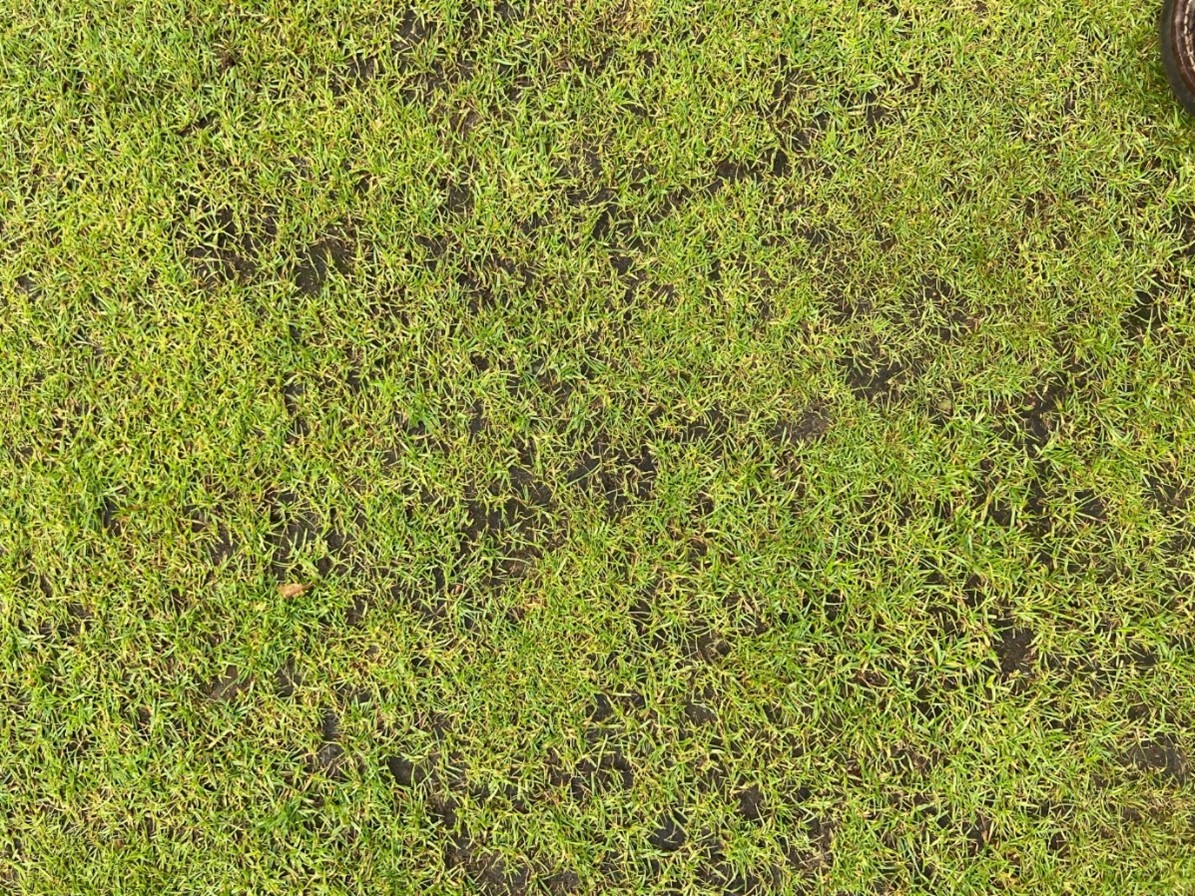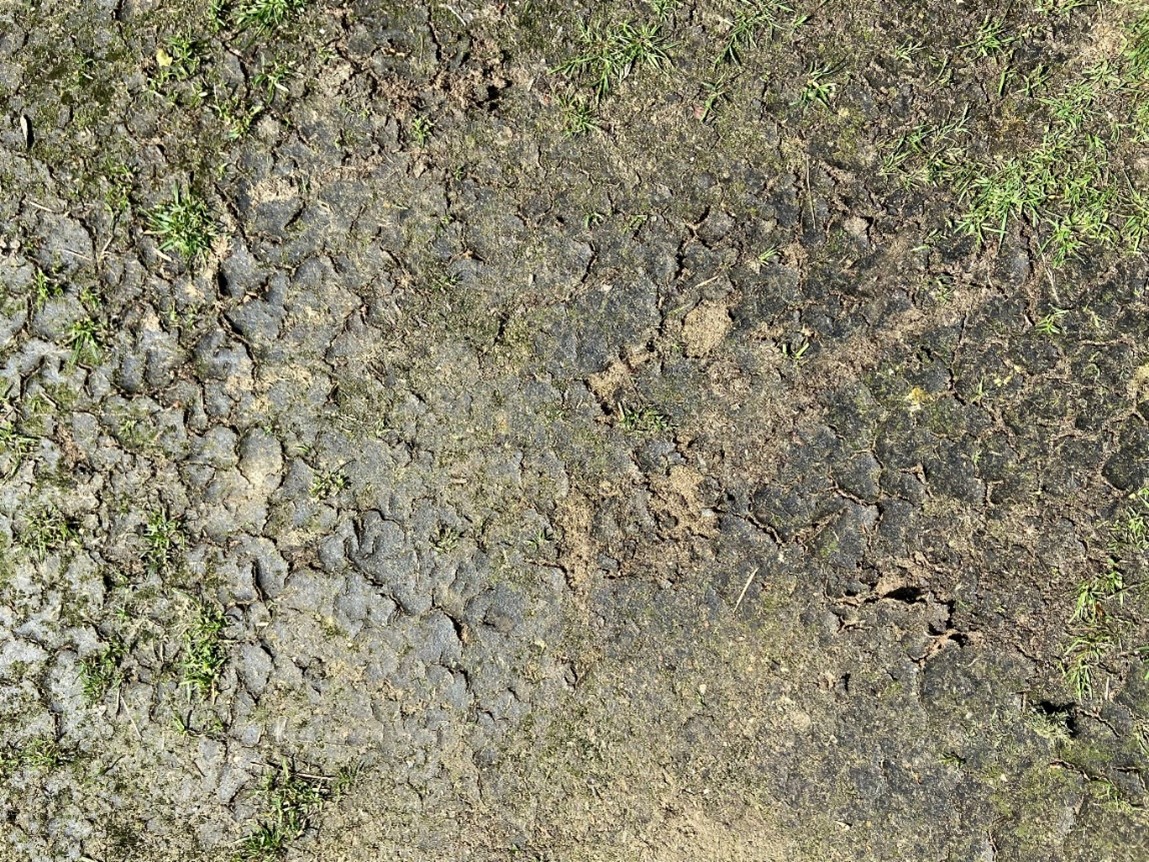What Is This Black Slime On My Turf?
17th August 2021
I am often being asked, “What is this black slimy stuff on my turf?” The answer, it is Nostoc, a dark green, almost black cyanobacterium (a microscopic, single cell organism). These form filaments which are encased in a jelly like substance giving the appearance of an algae. Nostoc does not grow on the grass but inhabits any bare areas in the sward. It is also sometimes known as witches butter or star slime.

To grow, it relies on warmth, moisture and some sunlight to photosynthesise and produces chlorophyll and phycocyanin (effective for photosynthesis at very low light levels), hence it’s dark green appearance. Similar to clover, Nostoc takes nitrogen gas from the air and fixes it in the soil, often showing a slightly greener appearance to the turf around it. Nostoc forms on bare areas, often on compacted soils in moist and shaded surroundings. It is also more prominent on soils that have an abundance of phosphorus.

When wet, Nostoc can swell as the jelly develops and assists in its movement over the soil surface. When it dries it cracks and produces a scab like appearance, this can be carefully removed, or at least reduced, by light scarification. I am seeing an increase in the occurrence of Nostoc which is due to a couple of factors. Firstly, the demands of sport that requires closer mowing and increased rolling and ironing of greens. Secondly, before it was withdrawn, quite a few years ago, chlorothalonil fungicide (Daconil) was used and although not on the label in the UK, this had an effective control of Nostoc.
The jelly substance can be very slippery and can be a particular issue on bowls greens. Nostoc gathers on the ends where bowlers are creating compaction and then with smooth surface shoes, bowlers can easily slip. The slippery surface can be reduced by the addition of a top dressing sand. For a longer term solutions, look to improve airflow, increase aeration, lightly scarify areas effected, use a penetrative wetting agent, apply copper (repeated applications may be required) and have a soil test taken to ascertain phosphorus levels. If phosphorus levels are high, use phosphorus free fertilisers.
By Chris Humphrey MBPR FQA, Technical Manager
For expert help and advice, contact Collier Turf Care on 01328 700600
Related Products
Out Of Stock
£144.00
inc VAT
£120.00
ex VAT
In Stock
£9.23
inc VAT
£7.69
ex VAT
In Stock
£205.20
inc VAT
£171.00
ex VAT
In Stock
£200.00
inc VAT
£166.67
ex VAT